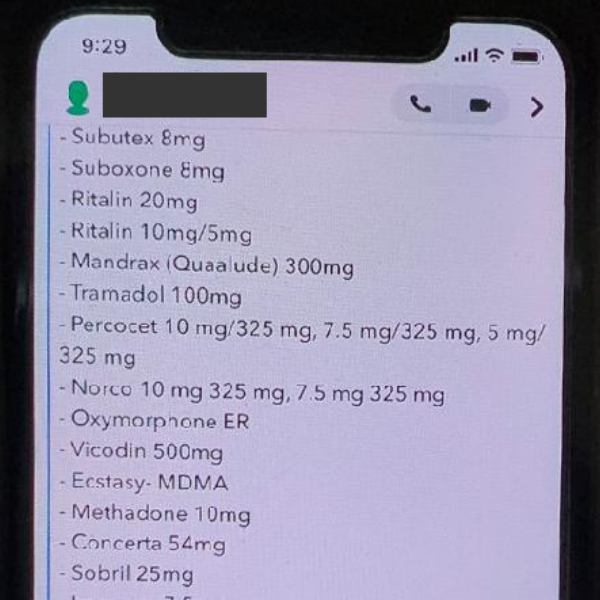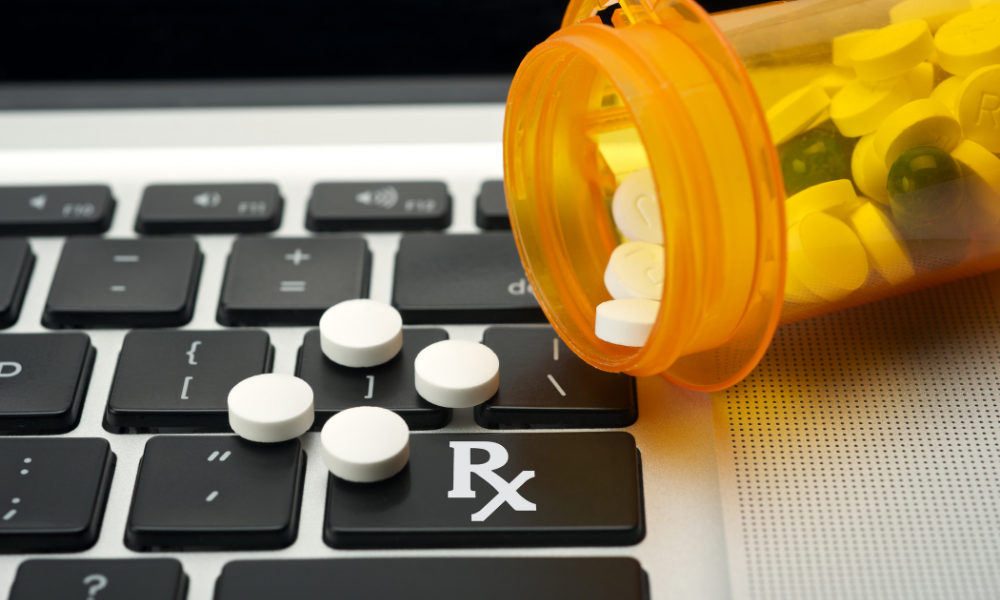Sammy Chapman was an amazing kid, sweet, funny, curious, and an A student. His parents Sam and Laura worked hard to keep him away from dangerous people and places. But, like most parents, they had no idea that drug dealers were preying on their children using social media platforms. And they had no idea illegal, untested drugs could be delivered to a child’s house as easily as a pizza. Last February, a drug dealer reached out to Sammy on Snapchat and delivered drugs to him at home. Sammy snuck out after his parents went to sleep to meet the dealer, who gave him what turned out to be a lethal dose of fentanyl. (Fentanyl is a synthetic opioid twice as addictive as heroin, 100 times more powerful than morphine, and fatal even in microscopic doses.) Sammy thought he had purchased Xanax and had no idea he was actually taking Fentanyl. As a result, Sam and Laura experienced every parent’s worst pain —they lost their son.
Tragically, Sammy is one of the thousands of children this past year who died from drugs purchased off of social media.
Drug dealing via social media is a serious, emerging social media-related threat. According to research done before the pandemic, about a quarter of teens observed illegal drugs being advertised on social media. We are conducting new research, but in the meantime, we would guess that this number has increased exponentially over the last year-and-a-half of the Covid-19 pandemic.
This social media marketing of illegal drugs impacts developing children. Teens that use social media regularly are five times as likely to smoke cigarettes, three times as likely to abuse alcohol, and twice as likely to use marijuana.
Once children transition from observers to buyers, social media makes obtaining these drugs easier than ever before. The Organization for Social Media Safety has found in our own comprehensive testing that it takes about three minutes to connect with a drug dealer on social media and receive a “menu” of drugs for sale. This level of convenience and accessibility is incomparable to anything we have seen in our modern history. Previously, children determined to obtain drugs could certainly do so. But now, with a few clicks from inside a bedroom, children have access to almost any drug imaginable.

Combined with the recent explosion in the supply of Fentanyl and other lethal opioids, this new ease of getting drugs over social media is proving to be absolutely deadly. Overdose deaths are up almost 30%, setting historical records. And the trend continues to move in the wrong direction.
Most social media companies have simply been unable to stop the sale of drugs on their platforms. Dealers and buyers will use multiple social media platforms to conduct a single transaction to evade safety protocols. They will communicate using emojis to fool content moderators. And dealers will set up fake profiles designed to look like legitimate small businesses. That is why Snap’s Vice President of Public Policy said in a recent Congressional hearing, “[The drug dealers] are constantly evading our tactics, not just on Snapchat but on every platform.”
Sadly, many platforms, particularly the ones without a lot of child users, are unwilling to make the changes that would most effectively protect children from drug dealers on social media. They continue to block parents from using third-party safety software, like Bark, which can prevent or deter social media-related substance abuse among children. That is why we developed and are working to pass Sammy’s Law in Congress, which would require all social media platforms to give parents this choice.
So what can parents and educators do?
- Have your social media safety conversations.
- Discuss the danger of purchasing items from strangers or shady businesses on social media. These products, including prescription drugs, nutritional supplements, and diet pills, can and often will be counterfeit or tainted.
- Talk to your child about the dangers of substance abuse, and especially this newer danger of Fentanyl poisoning. While taking unprescribed prescription drugs is never safe, children need to realize that the dangers of taking social media-purchased prescription drugs have increased significantly. With Fentanyl circulating, taking any of these drugs, including Vicodin, Xanax, and Percocet, now has a greater risk of death.
2. Set your social media safety rules.
- Make sure you actually tell your child that your family has a rule against using drugs, including unprescribed prescription drugs. While this may seem too obvious of a rule to spend time discussing, clearly communicating it to your child increases the likelihood they will comply.
3. Calibrate your social media safety settings.
- Especially for tweens and younger teens, make sure that your child cannot download social media apps without your permission. Certain apps, like Snapchat, are, in our opinion, riskier for younger children and have been linked to drug dealing activity. Your child should only be using social media apps that you have judged to be safe given their current level of maturity and judgment.
- Make sure your child’s social media apps have the maximum privacy setting engaged so that drug dealers cannot target and contact them.
- Consider third-party safety software, which will provide you with alerts when dangerous content, including drug-related material, comes through your child’s social media accounts. We particularly recommend this software for high-risk children, meaning those who have any history of substance abuse, behavioral problems, school problems, or mental health issues. We endorse Bark. (While some platforms, like Snapchat, block Bark on iOS, you can use Bark on Android with a lot of these platforms.)
To learn more tips, sign up for our free Buckling the Social Media Seatbelt SuperCourse for parents.

